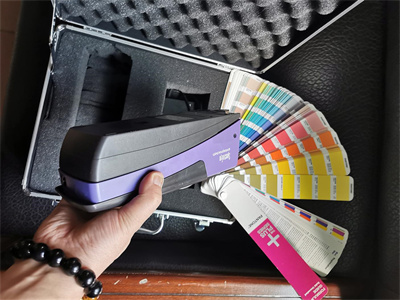Contact Us

Contact Us


Guangzhou Huaisheng Packaging Co.,Ltd.
We provide customers with quality products and provide high-quality services.
If you would like to leave us a comment please go to contact us
+86-18122240089

In the printing industry, to get excellent print quality, accurate control of print density is very important. As one of the key indicators for printing quality evaluation, the printing density meter has become an indispensable tool for printing companies.
Print density refers to the concentration or coverage of ink on a printed matter and is determined by measuring the optical density or light reflectivity of the ink. Accurate control of printing density has an important impact on print quality.
High printing density means thicker ink coverage, more vivid colors, and higher contrast, while low printing density may result in thin colors and unclear details, affecting the visual effect. Appropriate printing density can ensure that image details are preserved, outlines are clear, and shapes and structures are accurately discernible. However, printing density that is too high or too low may cause details to be lost or blurred, making the print lose its fineness and finesse. Therefore, during the printing process, precise control and adjustment of printing density is a key step to ensure that the printed matter reaches the expected quality, and the printing density meter has become an indispensable tool in the printing industry.
A densitometer for printing is a specialized instrument used to measure the density or light reflectivity of ink on printed matter. It usually consists of a light source, detector, and display or computer system. By measuring the concentration of ink or pigment, print densitometers provide accurate numerical data to evaluate the quality of prints. It can detect and record density changes during the printing process, as well as color consistency in different areas of the print, helping printers ensure print consistency and meet customer requirements.

1. Light source: The densitometers integrate a light source, usually an incandescent lamp or LED, which can emit a stable light source and has a wide spectrum of spectral distribution characteristics.
2. Calibration: The densitometers need to be calibrated to ensure the accuracy of the measurement results. Calibration typically involves measurements of white, black, and gray boards to obtain baseline values for each density level.
3. Sample measurement: Place the printed sample to be measured on the measuring stage of the densitometers, and the instrument will emit a beam of light to the sample.
4. Measurement principle: After the light is scattered and transmitted on the sample surface, it will return to the optical detection system of the printing densitometers.
5. Photoelectric sensor: There is a photoelectric sensor inside the printing densitometers, which can convert the light transmitted or reflected into an electrical signal.
6. Signal processing: The instrument amplifies, digitizes, and standardizes the electrical signals converted by the photoelectric sensor for subsequent analysis and calculation.
7. Density calculation: Based on the measured light transmission or reflection intensity, the printing densitometer can use Lab, CMYK, or other color space models to perform density calculation.
8. Result display: The density calculation results can be displayed on the display screen of the densitometer, showing the density values of different colors in the sample.
There are many types of densitometers for printing, including traditional densitometers and digital densitometers. Traditional densitometers, also known as optical densitometers, use optical principles to measure the density or light reflectivity of inks. It usually consists of a light source, a transmission filter, and a receiver. The light irradiated by the light source onto the printed matter is reflected to the receiver after passing through the filter and is converted into an electrical signal. By analyzing the electrical signal strength, the density or light reflectivity of the ink can be calculated.
In recent years, with the development of digital printing technology, digital density meters have emerged. It uses advanced technologies such as photoelectric sensors and digital displays to acquire and display printing density data in real-time. Digital printing densitometers have higher accuracy and more feature options, providing more detailed and accurate measurements.
